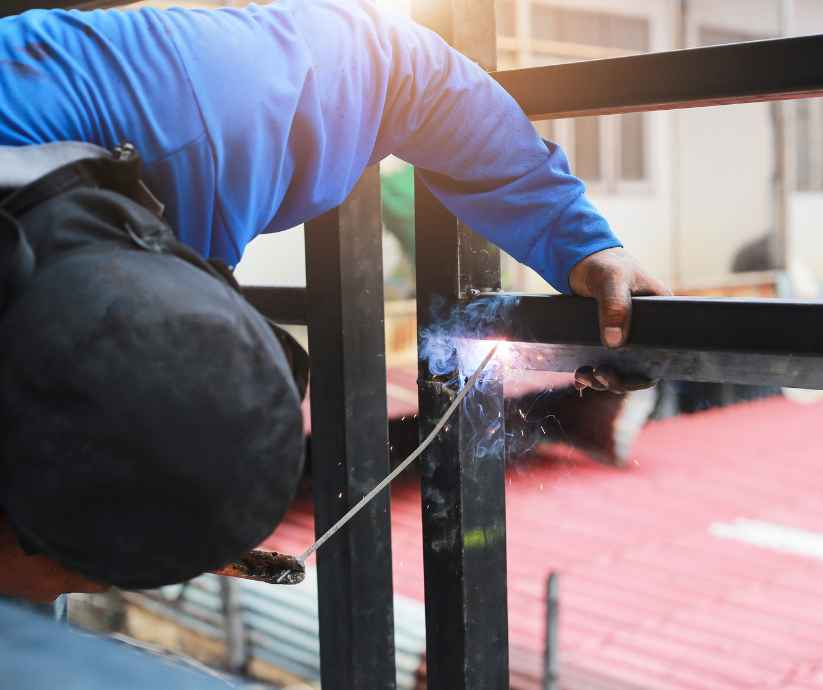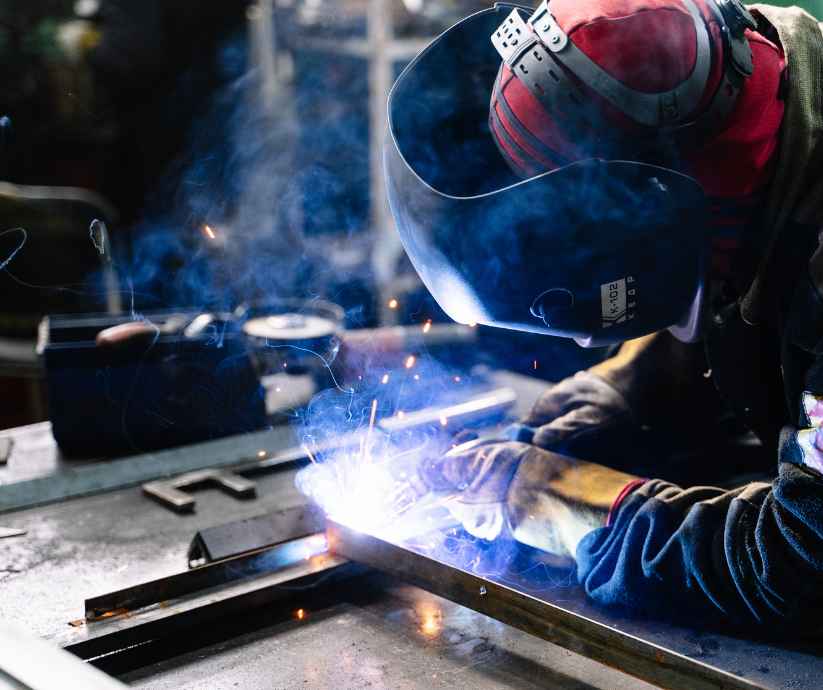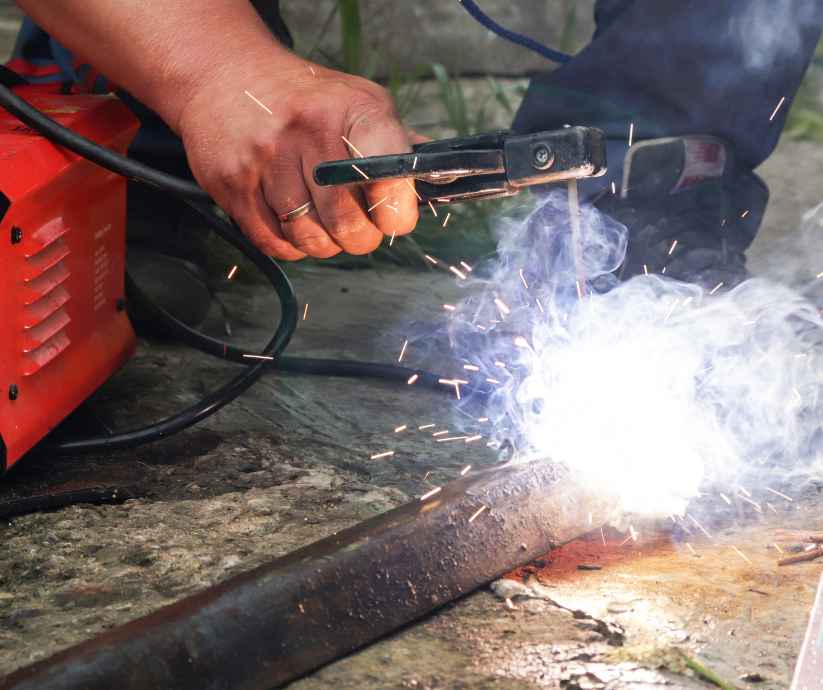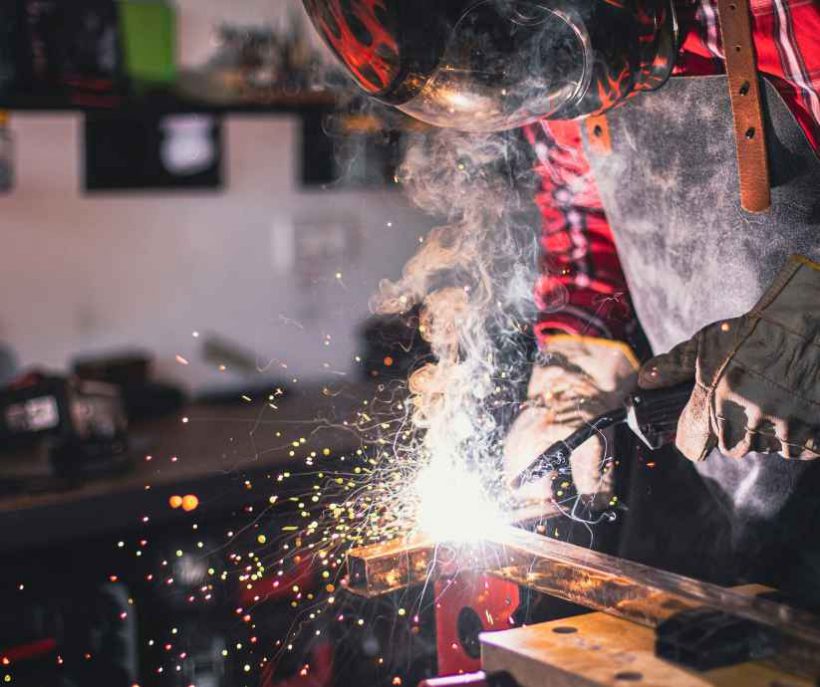Metals are joined through a technique called welding, and it has long been recognised as crucial expertise in fields like construction and automotive. However, many people nowadays have taken up welding as a hobby and discovered the possibilities in the privacy of their own homes. This article discusses the topic of do-it-yourself welding, emphasising its benefits, safety issues, necessary tools, and how-to instruction.

Unveiling the Advantages of Welding at Home
Engaging in welding at home offers numerous advantages that have captivated both hobbyists and DIY enthusiasts. Here are a few key benefits:
- Creativity and Customization: Welding at home allows individuals to unleash their creativity by fabricating unique metalwork pieces, such as sculptures, furniture, or decorative items. With welding, you can transform raw materials into personalized creations that reflect your style and imagination.
- Cost Efficiency: By mastering the art of welding, you can save money by repairing and fabricating metal objects yourself instead of hiring professional welders or purchasing new items. This DIY approach not only cuts costs but also provides a sense of accomplishment.
- Learning and Skill Development: Embarking on welding projects at home presents an opportunity to acquire new skills, expand your knowledge base, and understand the nuances of metalworking. With practice and dedication, you can develop proficiency and gain expertise in this versatile craft.
Safety Considerations for Welding at Home
While welding can be a fulfilling pursuit, it is vital to prioritize safety measures to prevent accidents and protect yourself and your surroundings. Consider the following precautions:
- Adequate Ventilation: Welding produces hazardous fumes and gases, so ensure your workspace has proper ventilation. Set up fans, open windows, or work in an outdoor area to maintain fresh air circulation.
- Protective Gear: Welding involves intense heat, bright light, and sparks. Protect yourself with a welding helmet, safety glasses, fire-resistant clothing, welding gloves, and sturdy footwear. Always wear appropriate gear to shield your body from potential hazards.
- Fire Prevention: Have a fire extinguisher nearby and clear any flammable materials from your work area. Keep a watchful eye for sparks and hot debris that could ignite surrounding objects. Taking fire safety precautions is essential to prevent accidents and maintain a safe environment.

Essential Equipment for Welding at Home
To embark on your welding journey, you will need to assemble a basic set of equipment. Here are some essential tools and materials:
- Welding Machine: Invest in a reliable welding machine suitable for your specific needs. Common options include MIG (Metal Inert Gas), TIG (Tungsten Inert Gas), and stick welders. Research the different types to choose the one that aligns with your projects and budget.
- Welding Consumables: Stock up on welding consumables such as electrodes, filler rods, welding wire, and shielding gas (if required). These supplies ensure smooth welding operations and maintain the integrity of your joints.
- Safety Equipment: As mentioned earlier, don’t compromise on personal protective equipment (PPE). Acquire a welding helmet with auto-darkening capabilities, safety glasses, welding gloves, a welding jacket or apron, and appropriate footwear to protect yourself from sparks, UV radiation, and heat.
- Welding Accessories: Gather essential welding accessories such as clamps, magnets, chipping hammers, wire brushes, and angle grinders. These tools aid in joint preparation, metal cleaning, and other crucial tasks.
Getting Started with Welding at Home
Now that you understand the benefits, safety considerations, and equipment needed, it’s time to take the first steps in your welding journey:
- Research and Learning: Begin by acquiring fundamental knowledge of welding processes, techniques, and safety guidelines. Numerous online resources, tutorials, and books can guide you through the learning process. Additionally, consider joining welding forums or local welding clubs to connect with experienced welders who can offer guidance and share insights.
- Start Small and Practice: Choose simple projects to begin with, focusing on building your foundational skills. Start by practising welding on scrap metal pieces or smaller objects. As you gain confidence and proficiency, gradually take on more complex projects.
- Seek Professional Guidance: If possible, consider taking a basic welding course at a local trade school or community college. These courses provide hands-on experience and expert guidance, allowing you to refine your skills under the supervision of experienced instructors.
- Embrace Trial and Error: Remember that welding, like any skill, requires practice and patience. Embrace the learning curve and don’t be discouraged by initial setbacks. Learn from mistakes, seek feedback, and continue refining your techniques.

Welding at home offers a captivating blend of artistry, craftsmanship, and practicality. By embracing this versatile skill, you can save money, and acquire valuable expertise. However, always prioritize safety by adopting necessary precautions, investing in quality equipment, and adhering to best practices. So, ignite your passion for welding, let sparks fly, and unlock a world of endless possibilities right in the comfort of your own home.
